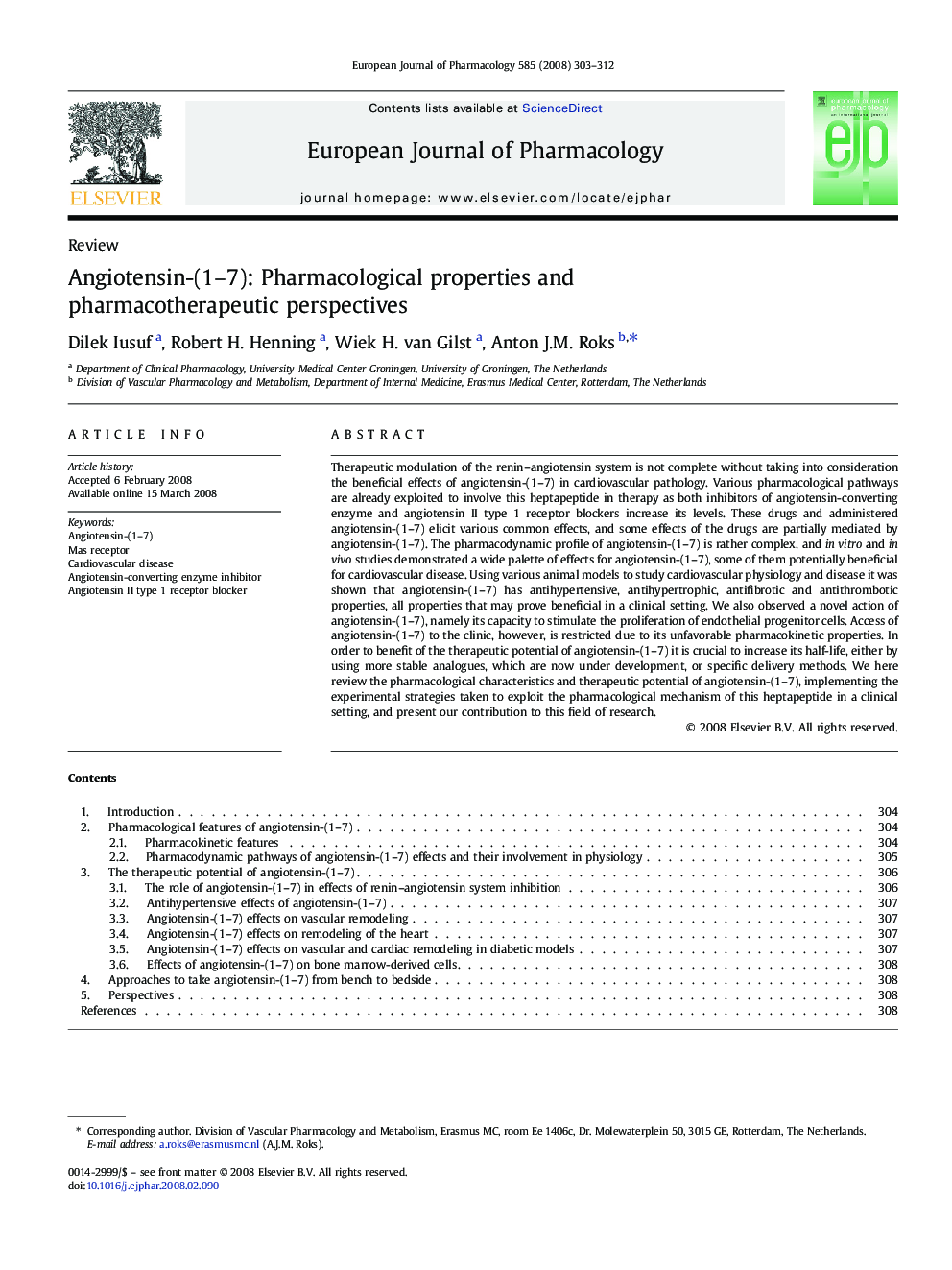| Article ID | Journal | Published Year | Pages | File Type |
|---|---|---|---|---|
| 2535145 | European Journal of Pharmacology | 2008 | 10 Pages |
Therapeutic modulation of the renin–angiotensin system is not complete without taking into consideration the beneficial effects of angiotensin-(1–7) in cardiovascular pathology. Various pharmacological pathways are already exploited to involve this heptapeptide in therapy as both inhibitors of angiotensin-converting enzyme and angiotensin II type 1 receptor blockers increase its levels. These drugs and administered angiotensin-(1–7) elicit various common effects, and some effects of the drugs are partially mediated by angiotensin-(1–7). The pharmacodynamic profile of angiotensin-(1–7) is rather complex, and in vitro and in vivo studies demonstrated a wide palette of effects for angiotensin-(1–7), some of them potentially beneficial for cardiovascular disease. Using various animal models to study cardiovascular physiology and disease it was shown that angiotensin-(1–7) has antihypertensive, antihypertrophic, antifibrotic and antithrombotic properties, all properties that may prove beneficial in a clinical setting. We also observed a novel action of angiotensin-(1–7), namely its capacity to stimulate the proliferation of endothelial progenitor cells. Access of angiotensin-(1–7) to the clinic, however, is restricted due to its unfavorable pharmacokinetic properties. In order to benefit of the therapeutic potential of angiotensin-(1–7) it is crucial to increase its half-life, either by using more stable analogues, which are now under development, or specific delivery methods. We here review the pharmacological characteristics and therapeutic potential of angiotensin-(1–7), implementing the experimental strategies taken to exploit the pharmacological mechanism of this heptapeptide in a clinical setting, and present our contribution to this field of research.
